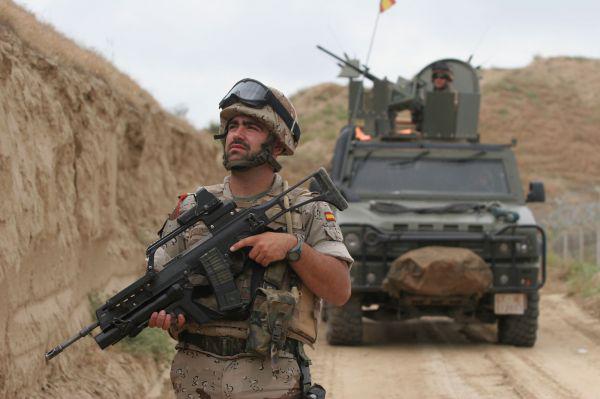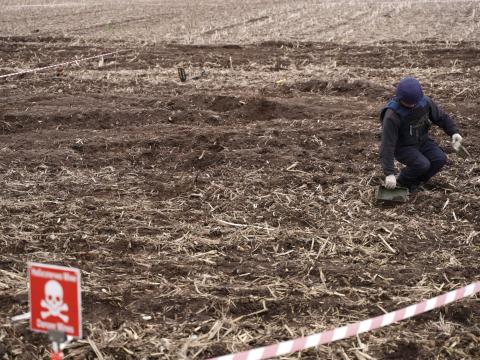NATO Seeks Umbrella Communications
NATO is adopting an enterprise approach to networking so it can take advantage of new defense information system capabilities as well as recent developments gleaned from Southwest Asia operations. This approach would allow different countries participating in alliance operations to network their own command, control and communications systems at the onset of an operation.
However, meeting this goal will require more than desire and a network architecture. NATO’s 28 members must come together to agree on and support a solution that underpins the enterprise approach. And, this must take place against the backdrop of budgetary constraints across the breadth of the alliance’s member nations.
Maj. Gen. Ludwig Leinhos, GEAF, is the director of the NATO Headquarters Consultation, Command and Control (C3) Staff. In that role, he also serves as capability area manager for C3 and co-vice chairman of the NATO C3 Board. The Headquarters C3 Staff provides analysis, advice and recommendations for NATO organizations and member nations on the development of C3 capabilities for alliance operations and to support the ongoing alliance transformation.
“One major challenge is that this role has to be executed in light of NATO’s streamlining effort and its consequence to achieve savings—and it will be,” Gen. Leinhos declares.
Part of that effort involves streamlining the regulatory framework of policies and guidance. Gen. Leinhos believes this will provide an alliance advisory framework for translation to national regulatory activities as well as improve interoperability.
The Headquarters C3 Staff has faced some changes since the formation of the NATO Communications and Information (NCI) Agency. The C3 Staff’s support to the NATO C3 Board is strengthened. Yet, the staff must follow what the Agency Supervisory Board is deciding and match its efforts, the general reports.
The creation of the NCI Agency last year is leading to wider and better service delivery, Gen. Leinhos notes. In his role as capability area manager for C3, he and the staff serve as a catalyst for coordinating the management overview of capability and service delivery.
The main thrust of the C3 enterprise effort entails bringing together the alliance’s various command structures and agencies with its headquarters. One approach is to streamline the networks for all NATO entities. If NATO planners realize their goals, NATO’s networking will be more efficient and less costly. And, the alliance will be able to provide more C3 support by enabling a confederation of networks. A consistent network for all NATO entities will allow for easier connectivity among several nations.
Gen. Leinhos allows that future operations likely will consist of a federation of networks. NATO entities will be accompanied by national networks brought to the operation by participating forces. These and other elements must be brought together, and this is easier when NATO brings a coherent system built from deployable entities within NATO’s chain of command.
The experience of the Afghan Mission Network (AMN) is the basis for NATO’s Future Mission Network (FMN), which Gen. Leinhos describes as a federation of mission networks. The AMN developed as a result of emerging exigencies when the International Security Assistance Force (ISAF) formed in Afghanistan. This federated network became a model for other coalition networks even though it was assembled on-site on an ad-hoc basis.
While a significant improvement over previous network architectures, the FMN still will depend on what capabilities participating nations bring to their coalition. Planners will need to identify the requirements necessary for nations to join the network. Gen. Leinhos points out that having basic work in place before a coalition assembles will simplify network connectivity in a NATO operation.
NATO’s Connected Forces Initiative addresses the issue of NATO nations focusing on preparedness instead of ad-hoc operational engagement. Nations must be able to communicate and operate together effectively before they embark on an operation. The C3 Staff is involved in this initiative through the FMN, the general notes, and the NATO enterprise concept strengthens a coherent approach for this type of federation.
Establishing this enterprise network approach will be complicated. All 28 nations must be aboard, and achieving consensus will take time and effort. “We may achieve progress, but we never will reach the 100 percent solution,” he says. Yet, if the alliance is able to make significant progress toward even an 80 percent solution some time within the next two or three years, that will be a positive development.
Gen. Leinhos notes that NATO currently is working with capability packages, and this process must be adapted to reflect the service-oriented approach that was established with the creation of the NCI Agency. This will involve changes in the various responsibilities, procedures and processes within NATO itself, and it will be a time-consuming process, the general declares.
As with all networking endeavors, the advent of innovative communications and information technologies is changing NATO’s approaches to C3. Gen. Leinhos allows that these changes are having a major impact on alliance C3 activities as well as the way NATO and its member nations support command and control, both for operations and for exercises.
“NATO’s experience in ISAF has demonstrated the value and necessity for national forces to be interconnected and share information,” he offers. “The technical means to do this, of course, already exists; but it required agreement between nations on how to do it and trust to actually do it in practice.”
He cites ISAF connectivity as an example of how the military benefitted from civilian information technology developments, especially convergence on common standards. Even in areas where the military leads in the development of technology and standards—such as security and highly resilient communications—the force makes maximum use of civilian technologies.
This trend provides both opportunities and challenges for the C3 Staff, he continues. On the plus side, planners often can choose from among civilian technologies that match already-established military requirements. The challenge is the changing nature of civilian technologies. Their rapid evolution cycle often outpaces the ability of NATO or member nations to upgrade their systems, the general observes.
One opportunity that NATO will take advantage of is big data. This trend is affecting the military environment, and it is feeding into the general military move toward more network-centric behavior, Gen. Leinhos says. Having access to greater quantities of information—much of it in real time—improves operational decision making. Several initiatives underway aim at acquiring intelligence, surveillance and reconnaissance capabilities that will add large amounts of data to networks. The key will be to ensure that the large amounts of data generated by these systems can be handled by the networks, he states, adding that the C3 Staff is closely engaged with other relevant NATO staffs in this area.
Overall, one of the C3 Staff’s missions is to achieve savings through its effort. The financial straits affecting all of the alliance’s member nations actually may help enable some of the needed consensus. Gen. Leinhos offers that the potential to realize savings may impel nations to support optimizing and streamlining NATO systems. And, individual nations may realize savings of their own through closer cooperation with the alliance. Instead of developing their own C3 systems and technologies, countries may opt to follow NATO’s lead and cooperate more closely on an international basis.
Even with the adoption of an enterprise architecture, many challenges would remain for NATO communications planners. One of the leading-edge changes occurring in Western militaries is the bring-your-own-device (BYOD) approach in which personnel incorporate their own smartphones or tablets into a military network. Gen. Leinhos offers his opinion that this is not likely to become NATO doctrine in the foreseeable future, as it would be very difficult to arrange all 28 nations to agree on a BYOD approach.





Comments